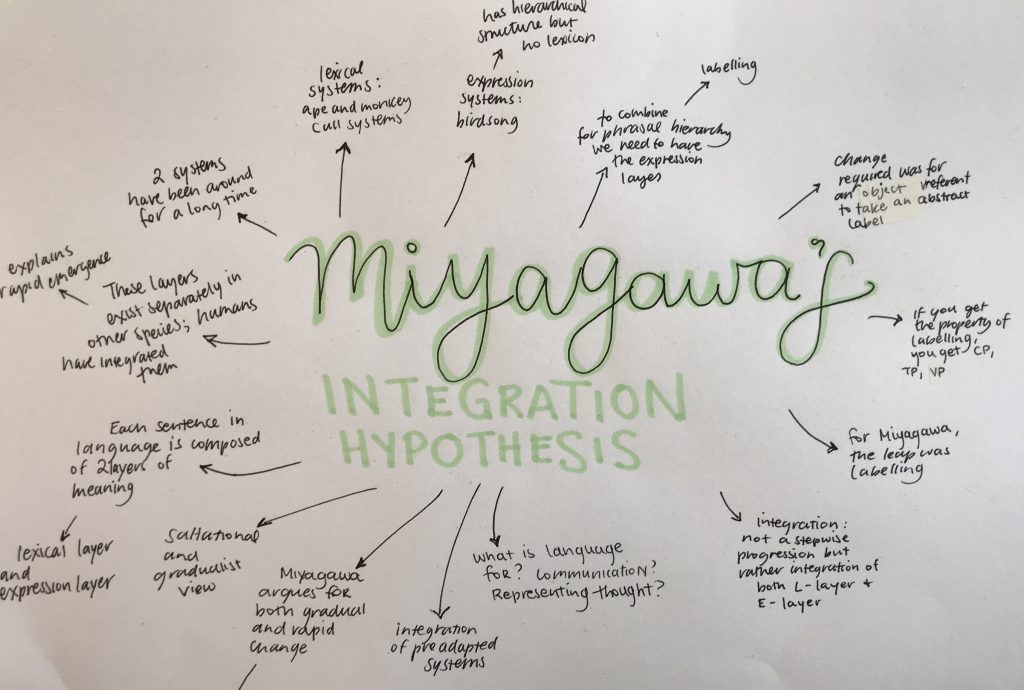Mind Mapping: Your New Study Method
Like many of you, I am always looking for new ways to review course content. Whether it be for memorizing vocabulary from a language class or understanding lecture materials, I think I have found the perfect study method that is creative and fun to use!
A mind map is a diagram that organizes and connects course content. First, you choose the main topic of your mind map, which is centred in the middle of your page. Then, you draw lines that branch out from the central subject, and add phrases, words, or even photographs that build off of your main idea.
Here is a mind map I made for a course on language evolution (LING 270):
Now, why are mind maps my go-to study method?
1. Unleash your creativity!
I use mind maps to study for exams because of their creativity. The visual and artistic aspect is appealing, there are no limits in terms of design, and for myself, mind mapping is a great outlet for practicing calligraphy.
If you prefer to work online or collaborate with others, mind mapping software is also available to use.
2. Reviewing becomes easy.
Reading through notes can be a tedious task. Instead, I find that creating a mind map allows me to notice connections between the bigger picture and the smaller details, which makes course content easier to retain.
As well, you might notice new relationships and links between the branches on your map that you had not previously considered.
The format also provides an effective way to review and synthesize key details that might be on a test or exam.
3. An engaging way to study complex topics.
I find that mind maps are really helpful for breaking down concepts and theories into smaller, easily understandable ideas.
The topic of my mind map, ‘Miyagawa’s Integration Hypothesis,’ seemed daunting at first. However, once I plotted out the details, I found that the concept became clearer as I read through each point and connected my existing knowledge with new information.
I encourage you to try out the mind mapping method this semester and see how it works for you and your classes.




